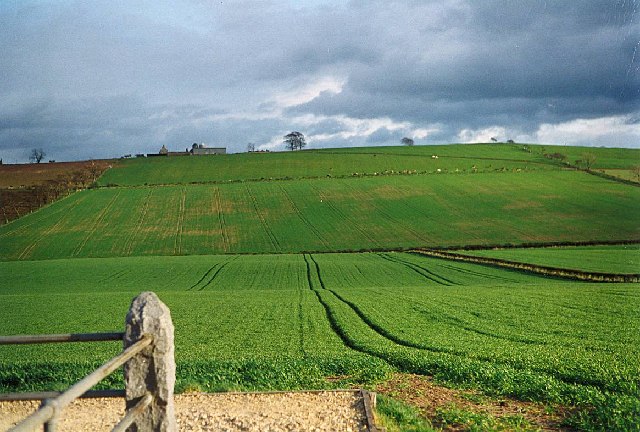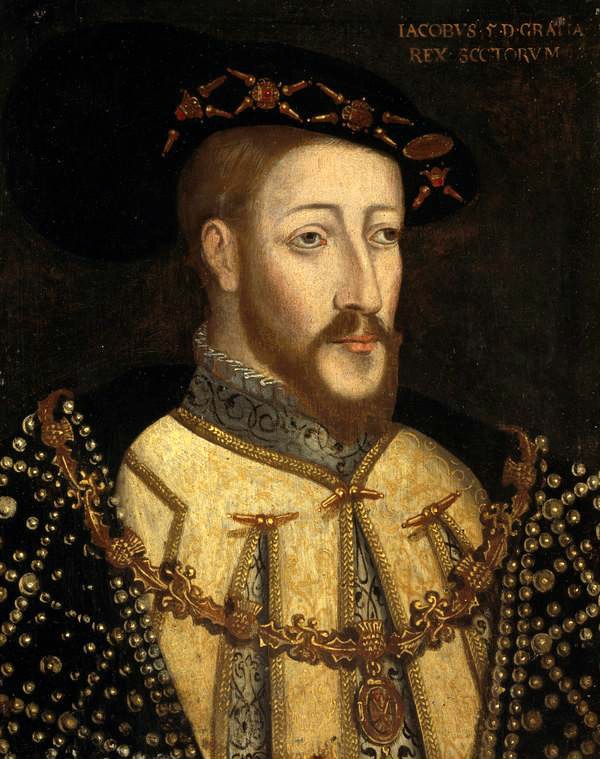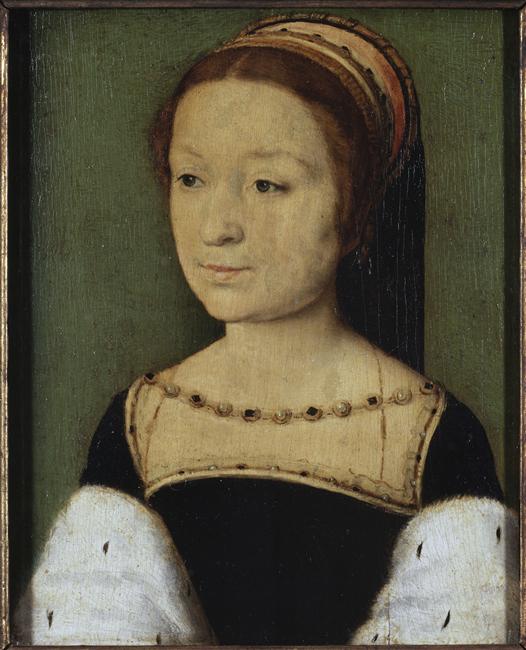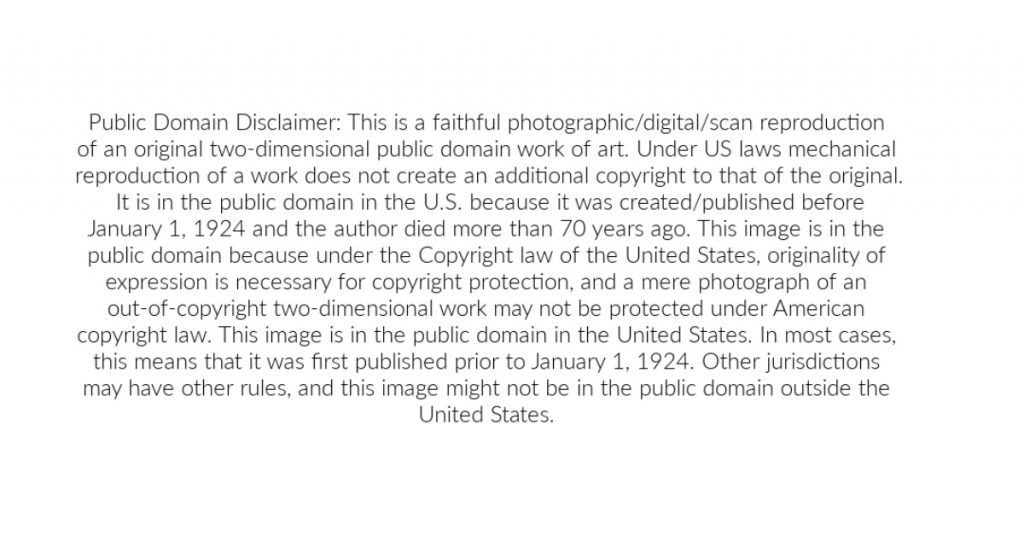
FEATURE image: Portrait of James IV, after 1578, artist unknown, 41.2 x 33 cm, National Galleries Scotland. Public Domain.

The earliest Middleton church was dedicated to Saint Cuthbert around 880 as pagan Danes were then attacking the north of England. Following William the Conqueror in 1066, the Normans built a larger church dedicated to Saint Leonard, a French saint and patron of prisoners. In 1412, Thomas Langley (1363-1437), Prince Bishop of Durham and Lord Chancellor of England under kings Henry IV, V and VI, built a new Gothic style church though incorporating parts of the old Norman building. In 1513, Sir Richard Assheton, Lord of the Manor and member of an illustrious military and religious family, spear-headed further changes. Completed in 1524 today’s St. Leonard was built on the previous church buildings so to celebrate Sir Richard’s knighthood by King Henry VIII for his part in the Battle of Flodden Field in 1513. The stained-glass window memorializes archers from Middleton who joined the battle on the side of the English. The battle took place in England only a few miles south of the Scottish border near Branxton and about 200 miles north of Middleton.

https://www.middletonparishchurch.org.uk/about-us/history/
By John P. Walsh
Not yet 40 years old, the reign of charismatic Scottish King James IV (1473-1513) came to an abrupt halt on September 9, 1513 when he was instantly killed in battle fighting against an English army in northernmost England.
Continental politics with its entangling alliances put Scotland in armed conflict against its neighbor for which it had signed a peace treaty only 11 years earlier.
In 1502 a treaty was signed pledging everlasting peace between the kingdoms of Scotland and England. The political settlement was sealed in the sacrament of marriage between ambitious (and religious) James IV to Margaret Tudor (1489-1541), the sister of future English King Henry VIII (1491-1547).
The Scots also had a treaty with France, their traditional ally. When the Pope in Italy excluded France from political gain in Italy—and England endorsed the pope’s action—France called on Scotland for help. In the summer of 1513, James invaded England.1
Much later in 1534 in England, papal interference in English political affairs where the pope denied the English King Henry the annulment he sought from Catherine of Aragon (1485-1536), led to England breaking with Rome and the formation of the Church of England.
After his father, James III of Scotland (1451-1488), was killed in battle in 1488, James IV became king at 15 years old


When James III was killed on June 11, 1488 at The Battle of Sauchieburn in Scotland, his 15-year-old son James IV succeeded him. He had been the rebels’ assumed figurehead, and for his indirect role in his father’s death James decided to wear a heavy iron belt for the rest of his life. A highly intelligent man, James IV proved an effective ruler. He spoke several languages and took an interest in literature, science, and law. Determined to establish strong central leadership he suppressed The Lord of the Isles and created a powerful navy. In 1503 he married the English king’s daughter, Margaret Tudor, in an attempt to create peace between the two countries. When England invaded France, James felt obliged to assist his old Continental ally. In 1513 he confronted the English army but was killed in the disastrous Battle of Flodden Field.


James IV married Margaret Tudor (1489-1541), the sister of future English King Henry VIII (1491-1547). While their marriage was an important part of the Truce of Perpetual Peace which was signed between Scotland and England in 1502, it did not prevent the Battle of Flodden Field over a decade later.

The Battle of Flodden Field was fought in the county of Northumberland in northern England on September 9, 1513. The battle was between the invading Scots army under King James IV and the English army commanded by the Earl of Surrey.

Battle strength and casualties are disputed but the Scots likely numbered more than 30,000 men and, after some delay, engaged an English force of around 20,000 men under Lieutenant-General Thomas Howard, 2nd Duke of Norfolk, Earl of Surrey (1443-1524). Howard would become the grandfather of future queens Anne Boleyn (1501-1536) and Catherine Howard (1521-1542).²

The Battle begins with an artillery duel and the Scot king is quickly killed in action. Bogged down, a third of the Scot army is destroyed
On September 9, 1513 the two armies clashed at Flodden Field in the far north of England. The battle proved a disaster for the Scots. Scotland’s inspiring king was quickly killed in action with a third of his army, including many officers. English losses were but a small fraction of their total.³
The battle started with an artillery duel. The Scots brought heavy guns and had difficulty aiming at the English army at close range below them. Lighter English guns were able to target and pick off the Scots’ guns. In response, the Scottish left wing advanced downhill and wreaked havoc on the English right wing. The rest of the Scottish army then advanced. But a marshy valley floor bogged the army down. The Scottish pikemen became easy targets for the English infantry. The end result was that a third of the Scottish army was destroyed.
New Scot King, James V, is 17 months old, in 1513. When he dies prematurely in 1542, Mary, Queen of Scots, his daughter and successor, is 6 days old
One immediate consequence of The Battle of Flodden Field was to put James V on the Scottish throne. James was born in April 1512 and not yet two years old.
The Scots were made to wait a generation for kingly leadership in very trying times. Thirty years later, in 1542, James V would die prematurely and was succeeded on the throne by his only legitimate daughter, Mary, Queen of Scots, who was only six days old.

James V (reigned 1513 – 1542), father of Mary, Queen of Scots, became king at one-year old when his father, James IV, was killed at Flodden, fighting the English. Ignoring the advice of English King Henry VIII, his uncle, to become a Protestant, James V strengthened Scotland’s alliance with its traditional ally, France. He married the French king, Francis I ‘s daughter, Madeleine of Valois (1520 –1537). When she died, he married Mary of Guise (1515-1560), another high-born Catholic French woman. James V died at Falkland Palace, soon after his army’s defeat by the English at Solway Moss, on November 24, 1542. His six-day-old daughter Mary succeeded to his throne.

Madeleine of Valois (1520 –1537), Corneille de Lyon (1500/1510–1575), Musée des Beaux-arts de Blois.
First wife of James V of Scotland. They married on New Year’s Day 1537 at Notre Dame Cathedral in Paris. Of delicate health from birth, Madeleine died in July 1537 at 17 years old.

Portrait of Mary of Guise (1515 – 1560), Corneille de Lyon, c. 1579, 41.3 x 33 cm, Scottish National Portrait Gallery.
Queen of James V of Scotland and mother of Mary, Queen of Scots. The daughter of a French duke, Mary of Guise had just been widowed when she married James V to strengthen the alliance between France and Scotland. Their two sons died in infancy and James died a few days after their daughter, Mary, was born in 1542. Mary of Guise chose to stay in Scotland, ruling as Regent to protect her daughter’s interests. Courageous and determined, her effort to keep Scotland in the French Roman Catholic sphere was unsuccessful in the rising tide of Protestantism on the British Isles.

Mary, Queen of Scots, 1542 – 1587, artist unknown (after Francois Clouet, c. 1510 – 1572), 32.90 x 27.40 cm, National Galleries Scotland.
This is probably a 19th century replica after an image made around 1561. Within eighteen months Mary, Queen of Scots, lost three members of her closest family — her father-in-law (Henry II of France), mother (Mary of Guise) and, on December 5, 1560, her husband, Francois II of France. Mary is depicted here in mourning, wearing a white hood and veil. According to the Venetian Ambassador to the French court, Mary was inconsolable. Her “tears and lamentations inspired a great pity” in everyone, the diplomat observed. Eight months later, having lost her position as Queen of France, Mary landed at Leith to take up her duties as Queen of Scotland.
Over two hundred years later Scottish poet Jane (or Jean) Elliot (1727-1805) wrote a poetic lamentation to an ancient Scottish tune about Flodden’s martial calamity. Published in 1776, it is called The Flowers of The Forest and is Elliot’s only surviving work.
Dule and wae for the order sent our lads to the Border;
The English for ance, by guile wan the day;
The Flowers of the Forest, that foucht aye the foremost,
The prime o’ our land are cauld in the clay.
We’ll hear nae mair lilting at our yowe-milking,
Women and bairns are heartless and wae;
Sighing and moaning on ilka green loaning:
‘The Flowers of the Forest are a’ wede away.4
King James IV corpse riddled with arrows on the battlefield
King James IV died at Flodden on September 9, 1513. His corpse was disfigured by arrows. The bow and arrow is an ancient weapon. Arrows inflicted some of medieval battle’s worst wounds when the victim was struck. Though guns and cannonade take pride of place in terms of firepower, arrows caused wounds that could be more fatal than those produced by other weapons.
Battle of Flodden Field weapons: guns, cannon, pikes, and arrows
The heavier the arrowhead, usually made of metal, the larger the feathers needed to spin it towards its target. Victims did not die usually in battle from a single arrow wound. Expert bowman could shoot one arrow every 5 to 10 seconds.
Complicating multiple wounds was that each arrowhead had to be removed. Since the arrow was constructed to have the arrowhead dislodge in the body, it made its location and removal highly dangerous and difficult. Arrowheads could not remain in the body. They were too large, sharp, and angular for bodily tissue to heal around it. They could easily become infected and caused intense pain with the slightest of bodily movement. A general medical procedure was to cut off limbs with arrow wounds. If the arrowhead was lodged into bone, it made its removal even more painful and difficult. Lodged arrows could cause nerve damage or intense muscle contractions. Arrows to the head might not penetrate the skull but could cause cerebral compression whose pressure would be alleviated by surgery. Bowmen knew to hit the trunk of the body was going to be likely fatal and this is where most combatant injuries by arrows are found.5
Taken to England after battle, the fate of the Scottish king’s disfigured corpse
After the battle, James IV’s corpse was identified and taken to Berwick-upon-Tweed where it was cleaned up and embalmed. Placed in a lead coffin, the body was transported to London.

20 1/2 in. x 16 1/2 in. (520 mm x 420 mm) overall National Portrait Gallery, London. Public Domain. see – https://www.npg.org.uk/collections/search/portrait/mw194913/Katherine-of-Aragon?LinkID=mp00801&role=sit&rNo=0
The body was received by Catherine of Aragon (1486-1536), the wife of King Henry VIII of England who was fighting in France. The body remained in Richmond upon Thames with a monastery. James IV might have been buried at the monastery except that the Scottish king had been excommunicated for breaking the Truce signed between Scotland and England in 1502. Although the pope granted permission for burial, the corpse was left in a monastery shed to, quite literally, rot.
In England the body of the Scottish king was soon forgotten about. It is conjectured someone stole the head and, after a time, that detached body part was thrown into a popular London charnel pit. The body presumably stayed at the monastery. When the monastery was demolished during the Dissolution in the 1530’s, the headless body of James IV was lost with it.
NOTES:
1 Trevor Royle, Precipitous City: The Story of Literary Edinburgh, Mainstream Publishing, Edinburgh, 1980. pp. 16-17.
2 Stanford E. Lehmberg, “The Life of Thomas Howard, Earl of Surrey and Second Duke of Norfolk, 1443-1524 by Melvin J. Tucker,” The American Historical Review, Vol. 71, No. 1 (Oct., 1965), p. 158.
3 “The Flodden Death-Roll,” The Scottish Antiquary, or, Northern Notes and Queries, Vol. 13, No. 51 (Jan., 1899), Edinburgh University Press, p. 102.
4Royle, Precipitous City, p.17.
5 arrow wounds and burial of James IV. See – https://www.bbc.com/news/uk-scotland-23993363 and





Warfare is a fascinating subject. Despite the dubious morality of using violence to achieve personal or political aims. It remains that conflict has been used to do just that throughout recorded history.
Your article is very well done, a good read.
Thank you, Gerald, for visiting and for your comments. It is, as you say, a fascinating subject. My interest to write on the battle was piqued by the Scottish independence referendum in September 2014 (as well as the battle’s 501th anniversary). You may have seen and hopefully enjoyed the episode on the Battle of Flodden Field from the BBC TV series “Two Men in a Trench” featuring archaeologists Tony Pollard and Neil Oliver (they have a companion book to the series which presents 6 major British battles published in 2002 by Michael Joseph Ltd). I find their work fascinating as they uncover artifacts from the battlefield pertaining to that harrowing day and develop these “new” physical resources to reinterpret the historical reality.